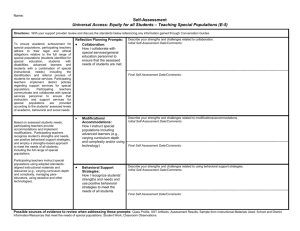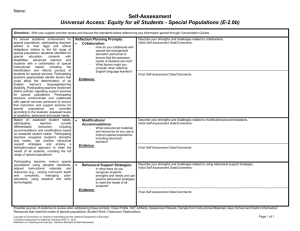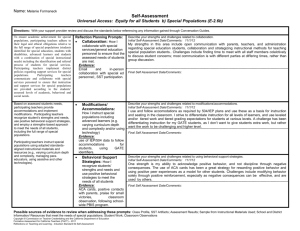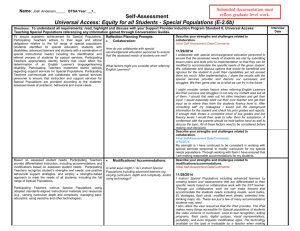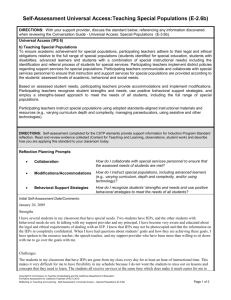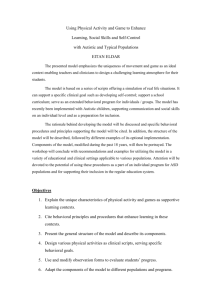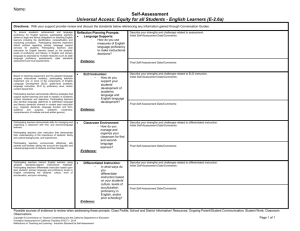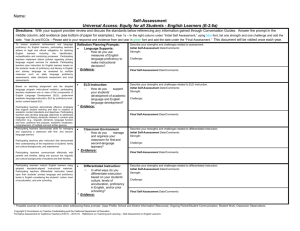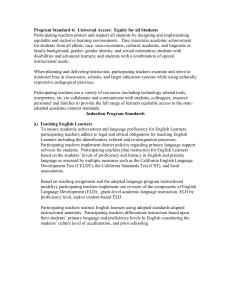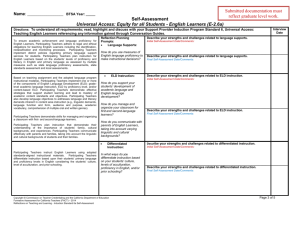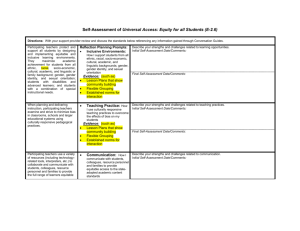students populations
advertisement
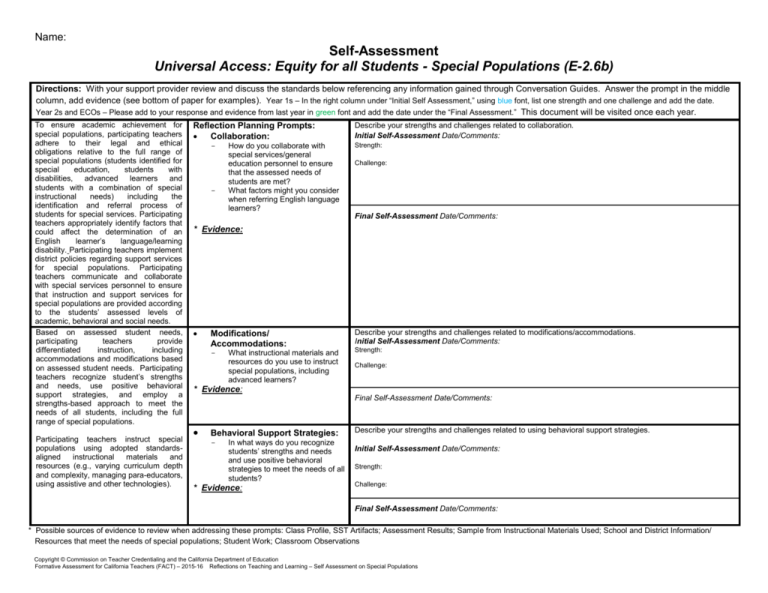
Name: Self-Assessment Universal Access: Equity for all Students - Special Populations (E-2.6b) Directions: With your support provider review and discuss the standards below referencing any information gained through Conversation Guides. Answer the prompt in the middle column, add evidence (see bottom of paper for examples). Year 1s – In the right column under “Initial Self Assessment,” using blue font, list one strength and one challenge and add the date. Year 2s and ECOs – Please add to your response and evidence from last year in green font and add the date under the “Final Assessment.” This document will be visited once each year. To ensure academic achievement for special populations, participating teachers adhere to their legal and ethical obligations relative to the full range of special populations (students identified for special education, students with disabilities, advanced learners and students with a combination of special instructional needs) including the identification and referral process of students for special services. Participating teachers appropriately identify factors that could affect the determination of an English learner’s language/learning disability. Participating teachers implement district policies regarding support services for special populations. Participating teachers communicate and collaborate with special services personnel to ensure that instruction and support services for special populations are provided according to the students’ assessed levels of academic, behavioral and social needs. Based on assessed student needs, participating teachers provide differentiated instruction, including accommodations and modifications based on assessed student needs. Participating teachers recognize student’s strengths and needs, use positive behavioral support strategies, and employ a strengths-based approach to meet the needs of all students, including the full range of special populations. Participating teachers instruct special populations using adopted standardsaligned instructional materials and resources (e.g., varying curriculum depth and complexity, managing para-educators, using assistive and other technologies). Reflection Planning Prompts: Collaboration: - - How do you collaborate with special services/general education personnel to ensure that the assessed needs of students are met? What factors might you consider when referring English language learners? Describe your strengths and challenges related to collaboration. Initial Self-Assessment Date/Comments: Strength: Challenge: Final Self-Assessment Date/Comments: * Evidence: Modifications/ Accommodations: - What instructional materials and resources do you use to instruct special populations, including advanced learners? Describe your strengths and challenges related to modifications/accommodations. Initial Self-Assessment Date/Comments: Strength: Challenge: * Evidence: Final Self-Assessment Date/Comments: Behavioral Support Strategies: - In what ways do you recognize students’ strengths and needs and use positive behavioral strategies to meet the needs of all students? * Evidence: Describe your strengths and challenges related to using behavioral support strategies. Initial Self-Assessment Date/Comments: Strength: Challenge: Final Self-Assessment Date/Comments: * Possible sources of evidence to review when addressing these prompts: Class Profile, SST Artifacts; Assessment Results; Sample from Instructional Materials Used; School and District Information/ Resources that meet the needs of special populations; Student Work; Classroom Observations Copyright © Commission on Teacher Credentialing and the California Department of Education Formative Assessment for California Teachers (FACT) – 2015-16 Reflections on Teaching and Learning – Self Assessment on Special Populations
